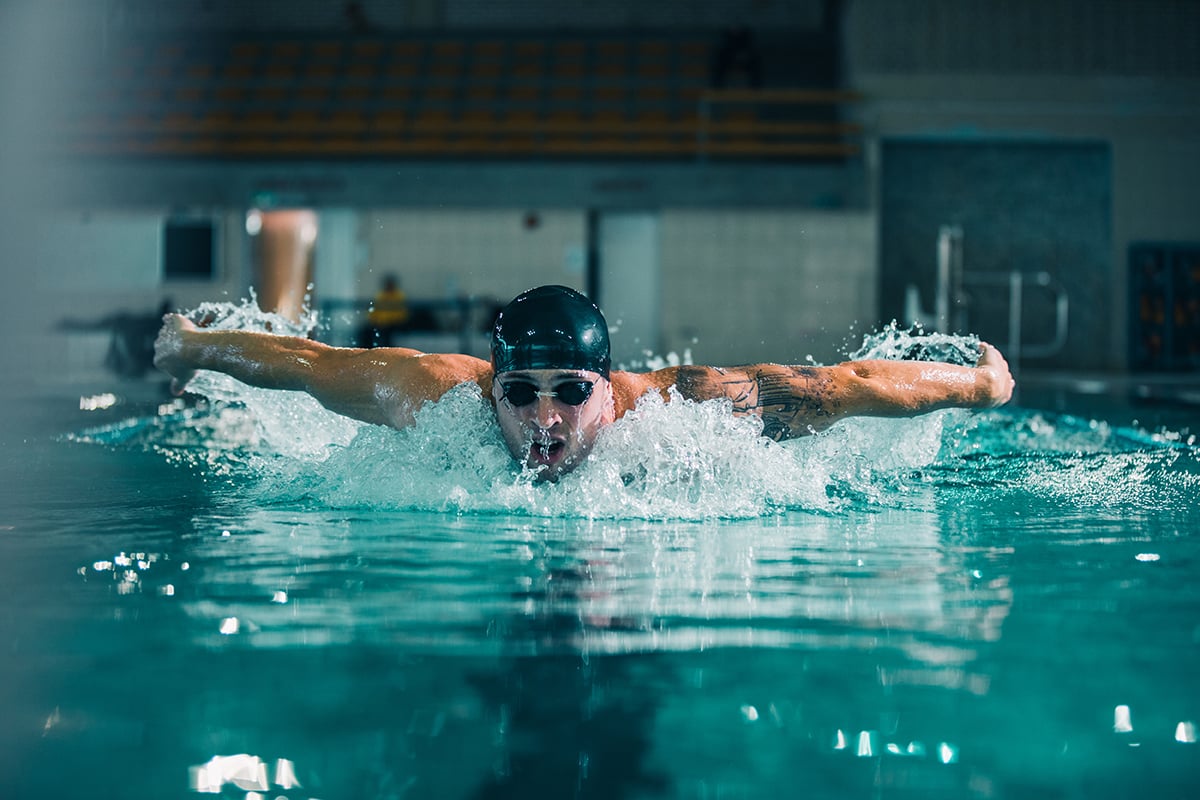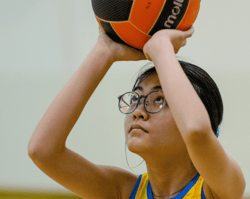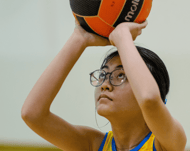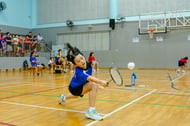By Yeo Chee Yew
After more than 26 months of DORSCON Orange, today marks the first day that we are back down to Yellow. Cue the (controlled) celebrations!
From today onwards, you will also no longer be required to pre-book a slot for swimming. Feel free to proceed to your preferred swimming complex and scan in with your NRIC or My QR on your ActiveSG app at the turnstile for admission.
Singaporeans who have even the most fleeting interest in sports would be no stranger to the swimming - our first Olympics and Paralympics Gold medals were attained from the sport, after all.
But not many would know the history of the swimming strokes we see nowadays. In this article, we look at the origins of the butterfly stroke, the event in which our very own Joseph Schooling claimed gold.
The butterfly stroke is a test of endurance, fortitude, and shoulder strength. Often regarded as the most complex stroke to learn, it has become a staple of swim meets and punishing practices.
In all accounts of its history, the butterfly stroke began as a mutation of the breaststroke. There are two parts to what we now call the butterfly: the arm movement (pull) and kick, each developed independently of the other. However, there isn’t actually a universally recognized creator of either.
Butterfly Pull
Most competitive swimmers swam the traditional breaststroke during the early 1900s. As such, many experimented with ways to improve their times. Of those who did, four became noted as the potential creators of the butterfly pull: Erich Rademacher, Henry Myers, David Armbruster, and Sydney Cavill.
The butterfly arm motion saw the swimmer recover their arms out of the water, instead of in it as the traditional breaststroke does. Not surprisingly, this would expend more energy and require considerable coördination; but it paid off with faster times.
Rademacher tried out the arm motion, paired with the traditional breaststroke kick, in races as early as 1927, during a visit to the United States. He insisted that he was still operating within the rules of breaststroke swimming. In 1933, Myers used the new arm stroke at a Brooklyn Y.M.C.A. swim meet, where he beat the American medley champion, Wallace Spence. Though confused by the pull, the officials determined Myers was still legally performing the breaststroke. However, the International Swimming Hall of Fame would officially credit Australian swimmer Cavill as the developer of the pull.
Dolphin Kick
During the same years that Rademacher, Myers, and Cavill were experimenting with their arms, a young physicist named Volney Wilson was spending much of his free time attempting to marry the different ways animals propelled themselves through the water with human motion. In the pool at the Chicago Athletic Club, he began to experiment with a new kind of leg movement for human swimmers: the dolphin kick. He quickly mastered it, pairing the sine-wave legs with the traditional arm movement of the breaststroke. Wilson then tried to popularize his new kick through demonstrations at swim meets, and even won an Olympic trial, in 1938, before being disqualified for using an illegal technique.
Instead of Wilson, credit for the dolphin kick usually goes to the previously mentioned David Armbruster, who, as a coach at the University of Iowa, had been reported by some accounts to have developed the pull while looking for a quicker recovery method for his breaststroke swimmers. In the 1930s, Armbruster, with his swimmer, Jack Sieg, began to experiment with a dolphin-like kick. Quickly after, the dup figured out that combining the two techniques together would yield the greatest results! That was two dolphin kicks with butterfly arms per cycle.
It was only a matter of time before arms met legs—but when exactly it occurred is difficult to say. The International Swimming Hall of Fame considers the Japanese swimmer Jiro Nagasawa among the first to combine the butterfly arm stroke with the dolphin leg kick, and he’s given credit for helping to popularize the stroke. In 1945, Nagasawa set a world record using the butterfly. By 1954, the stroke was officially recognized as the “butterfly” by the International Swimming Federation. Two years after that, the stroke was accepted into the Olympics as a separate category for competition.
Looking to get your feet wet? Come quench your thirst for swimming at any of our ActiveSG Swimming Pools today! We test our pool waters 5 times a day, in accordance with NEA’s guidelines. We also prominently display signs for users to observe the proper hygiene practices for the safety and benefit of all swimmers and have included enhanced measures.
The pools will be opened daily from 8am to 9.30pm. But wait, there’s more! ActiveSG swimming pools will be open for morning swim starting from 6.30am on alternate days (excluding Sunday). Please refer to the table below for the opening hours and days at the respective pools.
|
Name of Swimming Pool |
Morning Swim Availability |
|
Bishan Swimming Complex |
Monday, Wednesday, & Friday |
|
Heartbeat @ Bedok |
|
|
Hougang Swimming Complex |
|
|
Jalan Besar Swimming Complex |
|
|
Jurong Lake Swimming Complex |
|
|
Jurong West Swimming Complex |
|
|
Katong Swimming Complex |
|
|
Our Tampines Hub |
|
|
Serangoon Swimming Complex |
|
|
Toa Payoh Swimming Complex |
|
|
Woodlands Swimming Complex |
|
|
Yio Chu Kang Swimming Complex |
|
|
Ang Mo Kio Swimming Complex |
Tuesday, Thursday, & Saturday |
|
Bukit Batok Swimming Complex |
|
|
Choa Chu Kang Swimming Complex |
|
|
Clementi Swimming Complex |
|
|
Geylang East Swimming Complex |
|
|
Jurong East Swimming Complex |
|
|
Kallang Basin Swimming Complex |
|
|
Pasir Ris Swimming Complex |
|
|
Queenstown Swimming Complex |
|
|
Seng Kang Swimming Complex |
|
|
Senja Cashew Swimming Complex |
|
|
Yishun Swimming Complex |
To receive the latest updates on the happenings in the Singapore sports scene, follow GetActive TV on Facebook and Instagram!
Related Articles
Related Topics
Recent Events & Programmes
Related Articles
Related Topics
Related Articles
View All
Related Topics
[BlogPost 164749641842 NSG 2024 Netball: Senior Div Girls League 3 Preliminary Round 2, BlogPost 163985727414 Beyond the Field: Exciting Sports Careers for Non-Athletes, BlogPost 164438712123 NSG 2024 Badminton: Senior Div Girls Quarter-Finals, BlogPost 164238055490 Evergreen Aleksandar Duric Still Making Headlines at 53, BlogPost 164170080646 NSG 2024 Rope Skipping: Junior Div Girls Freestyle Team Finals, BlogPost 162884973666 Move and Rest Better With Data From Your Own Body, BlogPost 163393049482 Life Comes Full Circle For Serangoon Garden Secondary School's Fahrish Khan, BlogPost 163258797651 Making Golf a Sport for All, BlogPost 162512222328 NSG 2024 Sepaktakraw: Senior Div Yuhua Primary School vs Qihua Primary School, BlogPost 162233592997 Gritty Lions Suffer Loss to China, BlogPost 162089384371 On Your Mark, Get Ready, Go Running, BlogPost 161670652697 Lions' Excellent Showing Against China, BlogPost 161435270031 Ogura Optimistic for Exciting Clash against China, BlogPost 161127614758 The Future of Basketball in Singapore: Why 3x3 is Here to Stay, BlogPost 161033673012 The Active Lifestyler's Guide to the New ActiveSG Delta Sport Centre, BlogPost 161128356680 Grand New Champions Crowned at WTT Singapore Smash 2024, BlogPost 160844835218 NSG 2024 Table Tennis: C Div Boys Pool Round, BlogPost 160210745115 NSG 2024 Basketball: Senior Div Girls Tampines Primary School vs Frontier Primary School, BlogPost 159881180544 Whirlwind Return to Women's Football, BlogPost 159633541417 Singapore Smash to Elevate a New Legacy, BlogPost 158983580420 NSG 2024 Rugby: B Div Damai Secondary School vs Peirce Secondary School, BlogPost 159003960202 SFA Fiesta: Kicking off 2024 to a Roaring Start, BlogPost 158830735126 NSG 2024 Football: B Div Girls Preliminary Round Meridian Secondary School VS Bowen Secondary School, BlogPost 158536989718 Team Nila Volunteers Recognized At Awards Ceremony, BlogPost 158270107806 NSG 2024 Hockey: B Div Boys Preliminary Round Raffles Institution VS St. Hilda Secondary School, BlogPost 157966862615 NSG 2024 Floorball: B Division Preliminary Rounds Kick Off!, BlogPost 157562433712 What Is Safe Sport?, BlogPost 157559446197 Sengkang Secondary: Cultivating Well-Rounded Footballers, BlogPost 157368261167 New National Training Centre for Cricket at West Coast Ground, BlogPost 155340164987 Active Ageing with Joey Bonifacio, BlogPost 155930815517 Inaugural Singapore Youth League kicks off from 24th February 2024, BlogPost 155340164727 Bukit Canberra : the Coolest Spot in the North, BlogPost 155368905255 How Padang Fandi Inspired Ayden to Chase his Dream, BlogPost 154755572826 Ageing Backwards with Elizabeth Cheang, BlogPost 154094657315 Running For Fitness, BlogPost 153318636178 Excitement Builds for FIBA 3x3 Asia Cup 2024, BlogPost 153198644247 World's Top Four Confirmed for 2024 HSBC Women's World Championship, BlogPost 149413941770 Cultivating Your Kids’ Interest in the Outdoors, BlogPost 149413941163 Making Sport More Appealing for Our Kids, BlogPost 149412549409 Solo Or Team Sport – Choosing the Best for Your Child, BlogPost 151197478798 Former Lions Stalwart Baihakki Khaizan Sheds Light on New Accreditation to Elevate Grassroots Football and Youth Development, BlogPost 80703591291 New Year, Fitter You! Here are the top 3 workouts for the New Year, BlogPost 81171151456 7 Reasons Why Sports are Great for Children’s Mental Health, BlogPost 80542065330 17 Best Yoga Classes & Studios in Singapore [+ Rating & Prices], BlogPost 149404351798 From Brush to Lens: A Student's Journey in the World of Art and Sports Photography, BlogPost 149402825063 The Benefits of Active Parenting, BlogPost 149397832009 Sweden Claim 9th Straight Gold at the Women's World Floorball Championship, BlogPost 149397831449 Lion City Sailors Win 2023 Singapore Cup, BlogPost 148511324266 Pitch Perfect with Jonathan Teo, BlogPost 148511724402 Seniors: Increase your flexibility bit by bit with these stretches]











